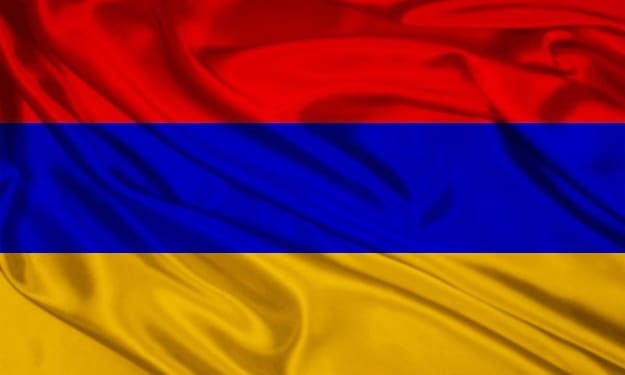Papua New Guinea
The transition was peaceful, but the country has faced multitudinous challenges since independence, including political insecurity, profitable development issues, and social pressures. Economy Papua New Guinea's frugality is heavily reliant on natural coffers. The country has abundant mineral coffers, including gold, bobby

Papua New Guinea( PNG) is a country located in Oceania, enwrapping the eastern half of the islet of New Guinea and multitudinous coastal islets. It shares its western border with Indonesia, while the eastern islets are girdled by the Bismarck Sea, Solomon Sea, and the Coral Sea.
As a nation rich in artistic and natural diversity, PNG offers a unique shade of traditions, languages, and natural geographies. Geography and Environment Papua New Guinea is characterized by its rugged terrain, which includes mountains, thick rainforests, and expansive swash systems. The central part of the islet is dominated by the Owen Stanley Range, with peaks reaching over 4,000 measures, similar as Mount Wilhelm, the country's loftiest point. The littoral regions feature mangroves, wetlands, and tableland rainforests, while the innards hosts tropical upland timbers.
The country is part of the Pacific Ring of Fire, making it prone to earthquakes and stormy exertion. specially, Rabaul on New Britain Island endured a significant stormy eruption in 1994, which devastated the city. Biodiversity PNG is one of the most biodiverse countries in the world. Its varied ecosystems are home to an estimated 5- 10 of global species, including numerous aboriginal species set up nowhere differently on Earth.
The region's foliage and fauna include marsupials like the tree kangaroo, an array of raspberry species similar as the iconic catcalls- of- paradise, and a wide variety of marine life supported by coral reefs. Cultural Diversity Papua New Guinea is famed for its artistic diversity. The country is home to over 850 distinct languages, counting for about 12 of the world's total languages, making it one of the most linguistically different places on the earth. This verbal variety is imaged in the country's artistic practices, which include different traditional balls, music, and rituals.
Each ethnical group in PNG has its unique customs and social structures. Traditional societies are frequently organized around clans and lines, with strong ties to land and nature. conventional practices similar as the" sing- sing"( carnivals where people from different lines gather to display their distinct balls, music, and costumes) play a pivotal part in maintaining artistic identity and community cohesion.
History The history of Papua New Guinea is rich and complex. mortal agreement in the region dates back at least 50,000 times. The islet's occupants developed intricate agrarian systems and engaged in long- distance trade well before European contact.
European explorers first observed the islet in the early 16th century. still, significant European agreement didn't do until the 19th century. In 1884, the eastern part of New Guinea was divided between Germany and Britain, with Germany taking the northern part( Kaiser- Wilhelmsland) and Britain taking the southern part( British New Guinea). After World War I, Australia administered the homes, which came known as the Territory of Papua and New Guinea. PNG gained full independence from Australia in 1975, establishing a administrative republic.
The transition was peaceful, but the country has faced multitudinous challenges since independence, including political insecurity, profitable development issues, and social pressures. Economy Papua New Guinea's frugality is heavily reliant on natural coffers. The country has abundant mineral coffers, including gold, bobby
, and natural gas. These coffers form a significant part of its import profit. The PNG LNG( thawed natural gas) design, in particular, has been a major profitable boon since it began product in 2014. Agriculture also plays a pivotal part in the frugality, with numerous Papua New Guineans engaged in subsistence husbandry. crucial agrarian products include coffee, cocoa, copra, and win oil painting. The country's rich marine coffers support a substantial fishing assiduity, with tuna being a primary import.
Despite its resource wealth, PNG faces significant profitable challenges. structure development is uneven, and numerous remote areas remain inapproachable. also, there's a high position of poverty, with important of the population counting on subsistence husbandry and informal profitable conditioning. Politics and Governance Papua New Guinea operates as a indigenous monarchy within the Commonwealth of Nations, feting the British monarch as its own.
The country has a administrative system, with the National Parliament being the central legislative body. Political life in PNG is vibrant but frequently unstable, characterized by frequent changes in government and coalition politics. Corruption remains a pervasive issue, affecting governance and development. sweats to combat corruption have been ongoing, with mixed success. Political dynamics are also told by regionalism and ethnical diversity, occasionally leading to localized conflicts and pressures.
Social Issues PNG faces several social challenges. Health pointers are generally poor, with high rates of motherly and infant mortality. contagious conditions similar as malaria and tuberculosis are current, and the healthcare system is frequently under- resourced and delicate to pierce in remote areas. Education is another critical area. While primary education is negligibly free, numerous children don't complete their training due to profitable pressures and logistical difficulties. The knowledge rate is perfecting but remains a concern, particularly in pastoral areas.
Conclusion Papua New Guinea is a country of immense eventuality, with its rich natural coffers, vibrant societies, and significant biodiversity. still, it faces substantial challenges in terms of profitable development, political stability, and social progress. sweats to address these issues are ongoing, with both the government and transnational mates working towards sustainable development. The future of PNG hinges on balancing the preservation of its unique artistic heritage and natural terrain with the demands of modernization and profitable growth.
About the Creator
Enjoyed the story? Support the Creator.
Subscribe for free to receive all their stories in your feed. You could also pledge your support or give them a one-off tip, letting them know you appreciate their work.





Comments
There are no comments for this story
Be the first to respond and start the conversation.